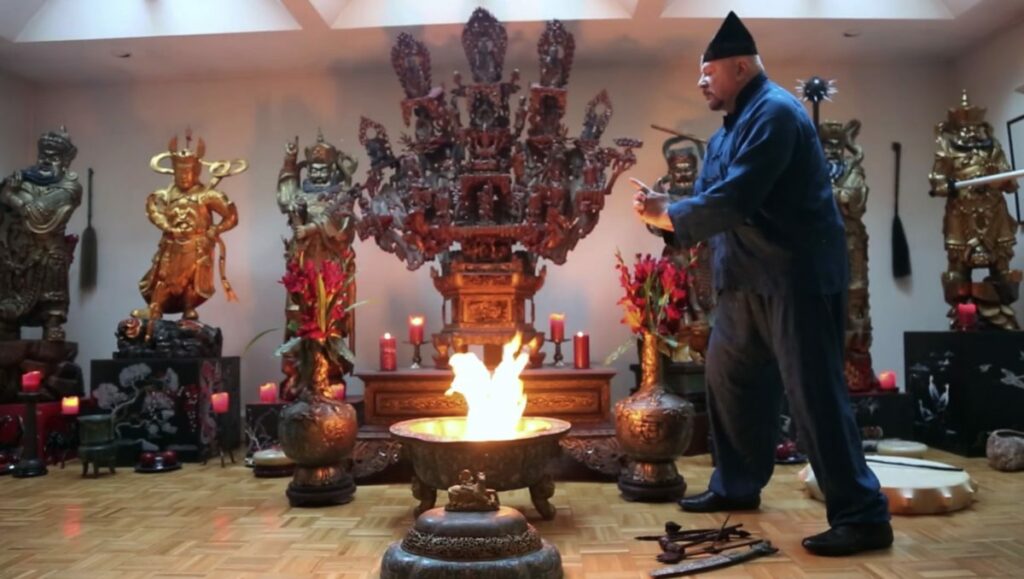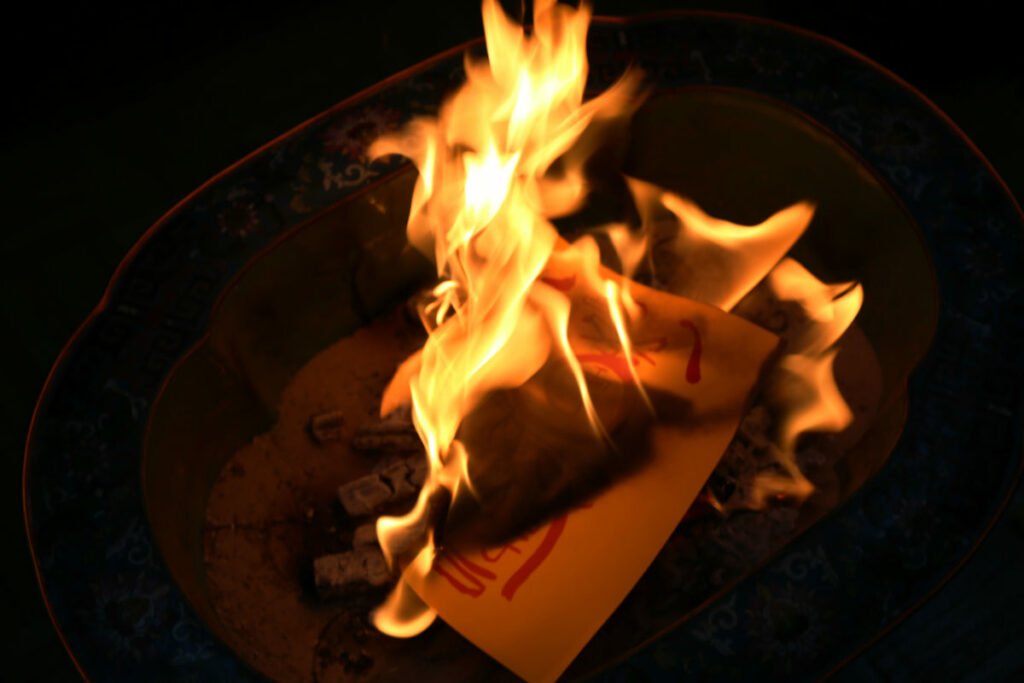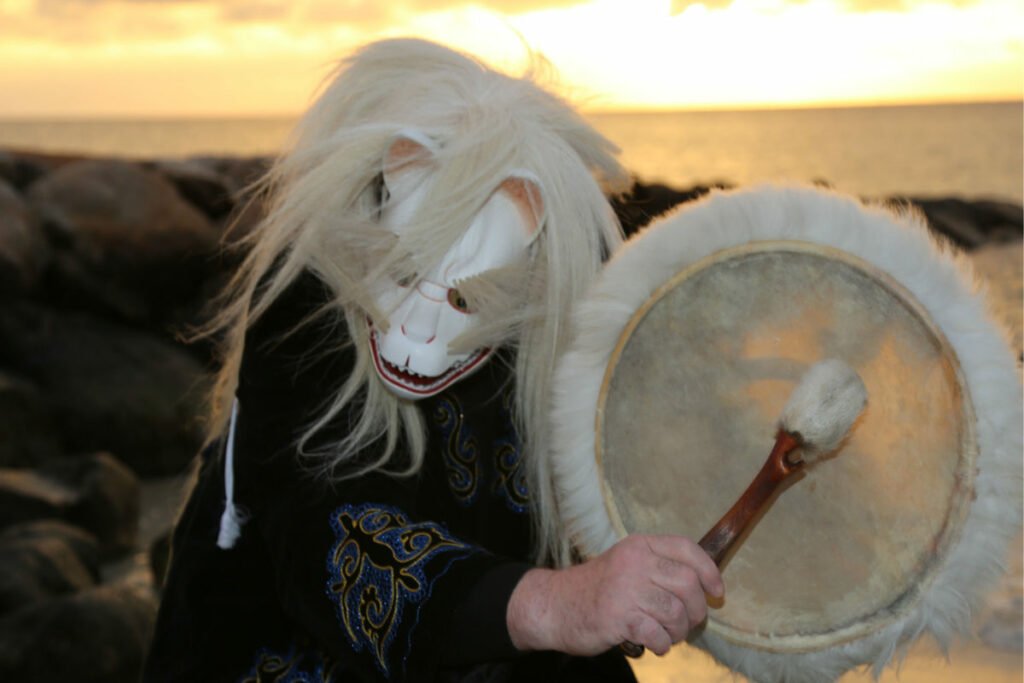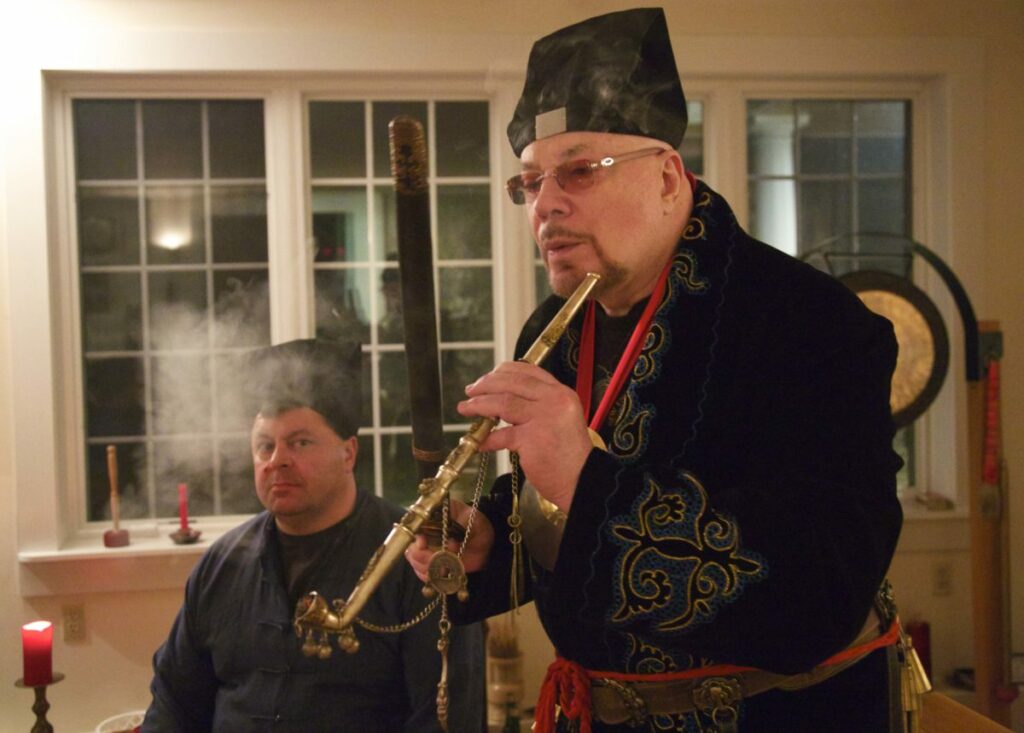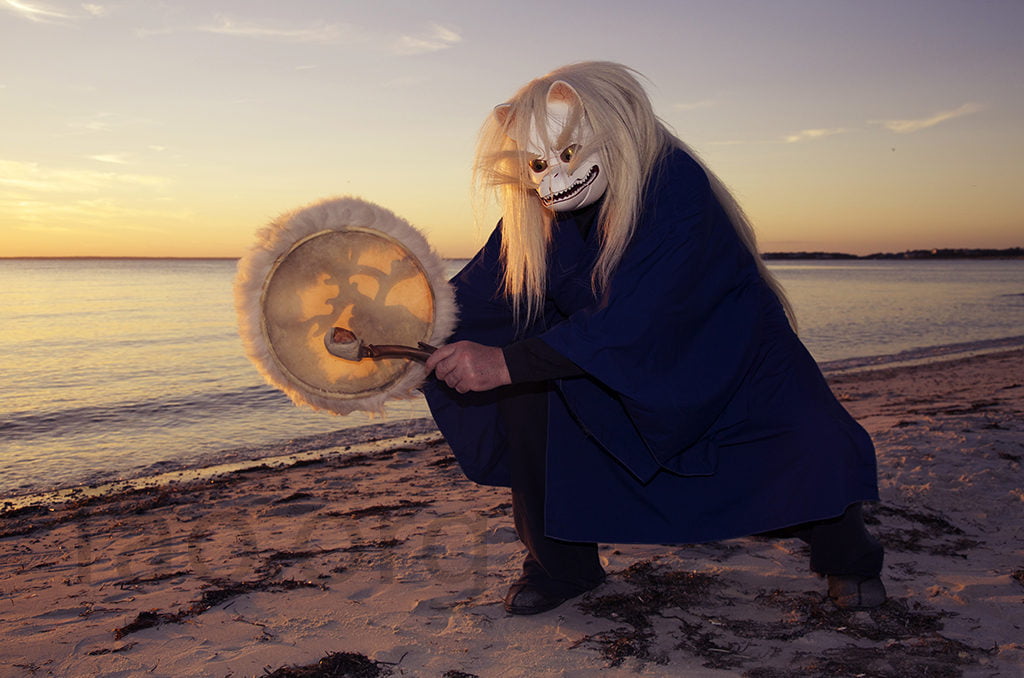Taoist Ceremonies
“Pray to the immortal spirits, call them to your aid, and you will be rewarded.”
– Lu Yang Tai
Ancient Taoist Chinese Shamanism
In our Temple of Original Simplicity we faithfully follow traditional methods and sacred rules of ancient Chinese shamanism.
During the Chou dynasty, shamanism became popular in mainstream Chinese society, as Eva Wong (1997, book: “The Shambhala Guide to Taoism”) described: “Shamanism entered a new phase in ancient China with the development of literacy and a sedentary society. By the 12th century B.C.E., in the early part of the Chou Dynasty, Kings and Nobles employed shamans as advisors, diviners and healers. Shamanism became an institution, and shamans were expected to exercise their ability as a duty.”
During the Chou dynasty, the duties of the shamans were inviting the spirits, interpreting dreams, reading omens, rainmaking, healing, and Celestial divination.
- Inviting the spirits. A major task of the shamans of the Chou Dynasty was to invite the spirits to visit the mortal realm and offer themselves as a place for the Spirit to stay temporarily. The visitation of the Spirit generally began with a dance, which put the Shaman in a trance and allowed the Spirit to enter the shaman’s body. This is different from possession, in which the spirit enters the body of the possessed, which then causes the trance. The shaman’s trance is the state of consciousness necessary for the visitation, rather than the result of the visitation. As Eliade asserts, this is the hallmark of a shamanic experience, making shamans different from psychic mediums and sorcerers whose magic is based on possession.
- Interpreting dreams. Dreams are considered to be carriers of omens, and one of the shaman’s tasks is to interpret these messages from the spirits. In ancient China, the dream was also linked to the shaman’s journey to the other realms. The ceremony of summoning the soul of the dead was conducted by a shaman called “the dream master.” This suggests that although dreams of nonshamans were messages from the spirits, they were not under the dreamer’s control, whereas the dreams of the shamans were journeys to other realms of existence in which the shamans were in full control of the dream journey.
- Reading omens. Another task of the shaman was to observe the changes in nature, predict the course of events, and decide whether it was auspicious or not to engage in a certain activity. Thus, shamans in the Chou dynasty were adept in the knowledge of the I-ching (the classic work of divination from ancient China known as the Book of Change) and were the forerunners of diviners.
- Rainmaking. It was also the task of the shaman to pray for rain. The rainmaking ceremony involved dancing and singing. The Chinese word for Spirit (ling) consists of three radicals: one meaning rain, another (showing three mouths), chanting, and the third, shaman. Often, the shaman would be exposed to the sun, using his suffering to “persuade” the sacred powers to send rain. Although the specifics of the ceremony have changed down the years, praying for rain has continued to be an integral part of Chinese religious ritual, and today the ceremony is performed by Taoist priests.
- Healing. Healing was another major task of the shaman. In the earliest times, this was primarily the responsibility of the shamaness. We are told that, in the healing ceremony, the shamaness grasped a green snake in her right hand and a red snake in her left hand and climbed into the mountains to gather the herbs that would restore life and health to a sick or dying person. The ancient Chinese believed that illness was the result of malevolent spirits invading the body; it was therefore logical that the task of healing should fall on the shoulders of the shaman, who had the ability to deal with both good and malevolent spirits.
- Celestial divination. During the latter part of the Chou dynasty, Celestial divination was very popular. It was believed that, given harmony in the skies, there would be peace, prosperity, and harmony on earth. The key to peace and prosperity lay in following the Celestial Way, or will of heaven, and for the Celestial Way to be followed, the meaning of celestial phenomena must be interpreted; thus, shamans were employed in the court to observe the skies and interpret Celestial events.
The Ceremonial attributes of the Celestial Fox Creed
The Temple of Original Simplicity performs ancient Chinese Taoist Shamanistic ceremonies to communicate with the holy spirits of the Celestial Foxes. These sacred rituals are completed with the master wearing special ceremonial garments, using consecrated talismans from cultures and geographies where the worship of the celestial Foxes is flourishing today just as it did thousands of years ago.
For the last 40 years in the Temple of Original Simplicity Master Alex Anatole has been a translator of cultures, interpreting the sacred Chinese Shamanistic principles for modern western culture. This spiritual journey led to the crystallization of the Temple’s Heavenly Lin Hun Therapy utilizing eclectic Celestial Fox teachings, icons and rituals from such diverse places as China, Mongolia, Japan, Southeast Asia, Central and South America, Kazakhstan, the Altai and Buryatia, regions in Siberia. As part of this eclectic sharing of Сelestial Fox dogma and icons, the master can wear different vestments at certain times during the shamanistic ceremony. The master can burn magic Taoist diagrams wearing the celestial garb of a Chinese Taoist priest, the ceremonial Shaman’s armor of Mongolia, Siberia shaman’s robes, along with an elaborate hat complete with the talisman of the Celestial Foxes.
The master also can don the Celestial Japanese mask of the Celestial Foxes protected with sacred amulets of the Goddess Inari. The Celestial deity Inari is the highest authority of the heavenly Foxes in Japan. Channeling the spirit of the Сelestial Foxes by donning the sacred, blessed Heavenly Fox mask, the master can invoke the power of the Сelestial Foxes in the venerable Heavenly Fox hall in the Temple of Original Simplicity. The great Celestial Fox hall has Heavenly Fox spirits from all over the world. Included in the sacred hall of Heavenly Foxes is the holy nine-tail Celestial Fox goddess from Thailand, the Heavenly Celestial Foxes from Japan, the great goddess of the holy Foxes from Taiwan and the venerable Celestial Fox spirits from China, Mr. and Mrs. Hu.
In the creed of Celestial Fox Shamanism there are icons of the holy Fox deities that are worshipped in different countries in different cultures all around the world. There are some differences in the ceremonial artifacts and rhythm of the rituals, but the core and methods of Shamanistic communication with the spirit of the Celestial Foxes is consistent across all the cultures and geographies.
White Cloud Temple of Shanghai, China
This brief clip demonstrates temple visitors burning offerings of incense to the Taoist Gods. Oftentimes the sacrifices are substantial. This video was recorded in the Shanghai White Cloud Temple with special permission granted by the Supreme Master Abbot Lu to members of the congregation from the Temple of Original Simplicity (Massachusetts, US). Special thanks to the White Cloud Temple Administration for the recording privileges.
Disclaimer
The content on this website is for informational purposes only. The ancient techniques of Taoism can be dangerous to physical and mental health if not practiced under the tutelage of a qualified Master.

